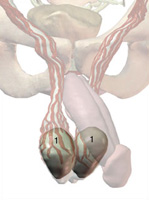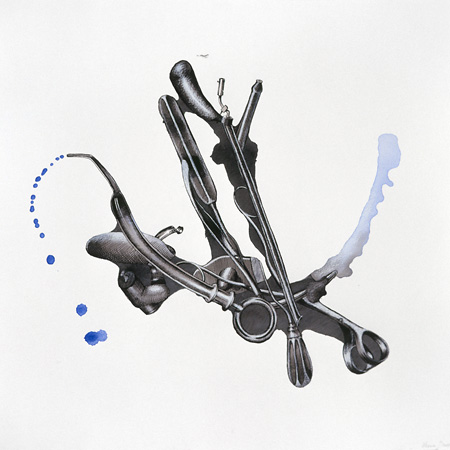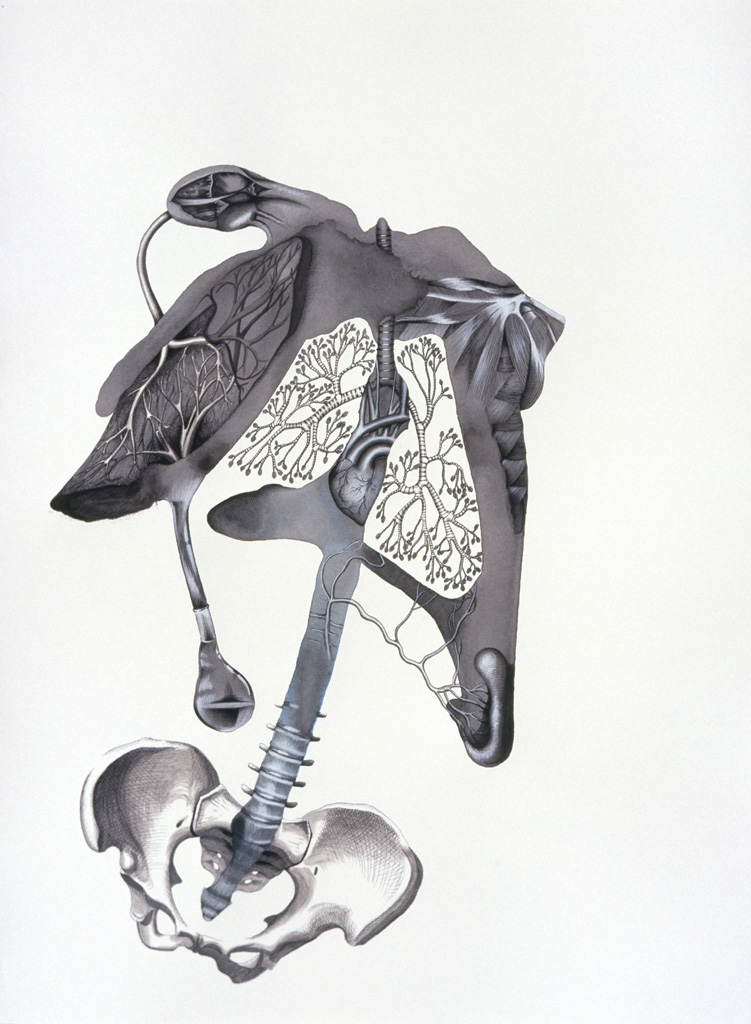
Not too long ago a friend mentioned that the word “avocado” is etymologically related to a word that means “testicle.” I looked it up, and indeed, several websites make the claim that avocado means testicle in Nahuatl (the Aztec language). She insightfully felt that I might find this association interesting for a drawing, which I did. I usually begin a new drawing by finding connections between the body and various other things, typically connections that may be vague but otherwise suggestive or curious. Nonetheless, my instantaneous internal reaction to her idea was “no!” which surprised me. Why not? It perfectly fit into how I usually work, and it was an interesting thought. So why did I feel an immediate resistance to the avocado-testicle?

I usually have a spontaneous reaction to an idea or situation. Only later do I make an attempt at rationalizing it. So what made this particular idea distinctively unattractive in contrast to other drawing ideas? Was it the sexual subject matter? No, this really didn’t make sense. I have no issue with sexuality entering my work, and I have nothing against drawing testicles or any other sexual organs. It is true that they are more challenging to incorporate into a drawing; much like eyeballs and skulls, they are such glaring signifiers that they complicate the potential for the themes I am interested in and the ambiguity I aim for. The work tends to get derailed and heavy-handed, but I am open to the extreme challenge if it presents itself. In any case, after pondering my intuitive reaction for a few minutes and trying to find the source of my rejection of the avocado-testicle, I realized the true reason: my drawings are for the most part biologically female!
This delayed realization came over me with an immense amount of shock. Most shocking was that I hadn’t thought of this before. How is that possible? I have been doing this work and thinking about it for years!
I began surveying my past Pareidolia drawings and looking for evidence of sex. There were a couple of interesting cases – one in a piece titled Agitated (above). As I was creating it, the drawing began to resemble male genitalia so I went along with the suggestion. However, the piece is entirely made up of antiquated laboratory equipment, not flesh, which complicates things.

The drawing that sheds more light on this question is Vital Chance. In this case, I was about to draw a pelvis and was faced with a choice: male or female? I could have drawn either, but I decidedly went with the female. At the time, I didn’t think much of this – it was immediate and intuitive.
Now the question is why? Why do I think of most of my drawings as female? An obvious answer might be that I identify with my drawings. Although that may be true, it feels a bit more complicated than that: I feel that they need to be female. My drawings are not supposed to be representations of women per se. Even Vital Chance was meant to be universal in its depiction of a human-like creature. To illustrate what I mean, a well-known example is the “evolution of man” diagram: the evolved ape happens to be biologically male. It could have just as easily been female.

In this sense, I am interested in creating work that can apply universally. Biological sex is not explicit in the vast majority of my work, at least not until a choice becomes inevitable – as it was for the illustrator who ended up choosing a male for the image above. Female bodies are underrepresented in depictions of humans that are meant to be universal, yet over-represented in sexually objectifying images. As an artist, I am in a position of responsibility: if my job is to build an aesthetic/meaningful experience that will exist in the world, my work ought to be socially responsible as well. All of my choices are ultimately screened by this principle, even if at first they manifest on an intuitive level.